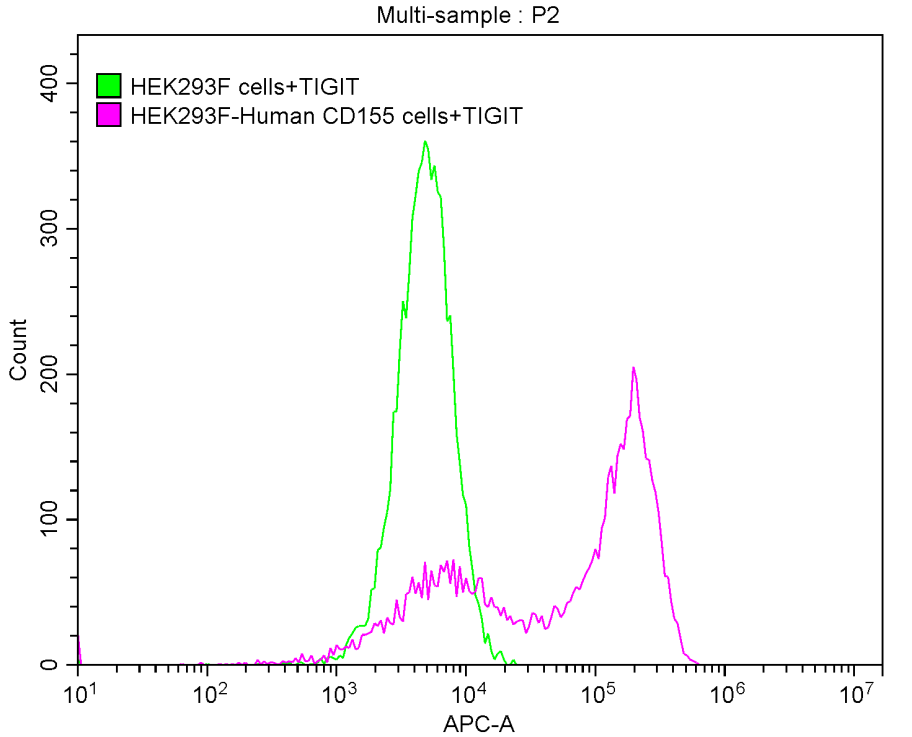Recombinant Human Tripartite motif-containing protein 72 (TRIM72), partial
-
中文名称:人TRIM72重组蛋白
-
货号:CSB-YP744394HU
-
规格:
-
来源:Yeast
-
其他:
-
中文名称:人TRIM72重组蛋白
-
货号:CSB-EP744394HU-B
-
规格:
-
来源:E.coli
-
共轭:Avi-tag Biotinylated
E. coli biotin ligase (BirA) is highly specific in covalently attaching biotin to the 15 amino acid AviTag peptide. This recombinant protein was biotinylated in vivo by AviTag-BirA technology, which method is BriA catalyzes amide linkage between the biotin and the specific lysine of the AviTag.
-
其他:
产品详情
-
纯度:>85% (SDS-PAGE)
-
基因名:TRIM72
-
Uniprot No.:
-
别名:LOC493829; Mg53; Mitsugumin-53; TRI72_HUMAN; trim72; Tripartite motif containing 72; Tripartite motif containing protein 72 ; Tripartite motif-containing protein 72
-
种属:Homo sapiens (Human)
-
蛋白长度:full length protein
-
表达区域:1-269
-
氨基酸序列MSAAPGLLHQELSCPLCLQLFDAPVTAECGHSFCRACLGRVAGEPAADGTVLCPCCQAPTRPQALSTNLQLARLVEGLAQVPQGHCEEHLDPLSIYCEQDRALVCGVCASLGSHRGHRLLPAAEAHARLKTQLPQQKLQLQEACMRKEKSVAVLEHQLVEVEETVRQFRGAVGEQLGKMRVFLAALEGSLDREAERVRGEAGVALRRELGSLNSYLEQLRQMEKVLEEVADKPQTEFLMKYCLVTSRLQKILAESPPPARLDIQLPIIS
-
蛋白标签:Tag type will be determined during the manufacturing process.
The tag type will be determined during production process. If you have specified tag type, please tell us and we will develop the specified tag preferentially. -
产品提供形式:Lyophilized powder
Note: We will preferentially ship the format that we have in stock, however, if you have any special requirement for the format, please remark your requirement when placing the order, we will prepare according to your demand. -
复溶:We recommend that this vial be briefly centrifuged prior to opening to bring the contents to the bottom. Please reconstitute protein in deionized sterile water to a concentration of 0.1-1.0 mg/mL.We recommend to add 5-50% of glycerol (final concentration) and aliquot for long-term storage at -20℃/-80℃. Our default final concentration of glycerol is 50%. Customers could use it as reference.
-
储存条件:Store at -20°C/-80°C upon receipt, aliquoting is necessary for mutiple use. Avoid repeated freeze-thaw cycles.
-
保质期:The shelf life is related to many factors, storage state, buffer ingredients, storage temperature and the stability of the protein itself.
Generally, the shelf life of liquid form is 6 months at -20°C/-80°C. The shelf life of lyophilized form is 12 months at -20°C/-80°C. -
货期:Delivery time may differ from different purchasing way or location, please kindly consult your local distributors for specific delivery time.Note: All of our proteins are default shipped with normal blue ice packs, if you request to ship with dry ice, please communicate with us in advance and extra fees will be charged.
-
注意事项:Repeated freezing and thawing is not recommended. Store working aliquots at 4°C for up to one week.
-
Datasheet :Please contact us to get it.
相关产品
靶点详情
-
功能:Muscle-specific protein that plays a central role in cell membrane repair by nucleating the assembly of the repair machinery at injury sites. Specifically binds phosphatidylserine. Acts as a sensor of oxidation: upon membrane damage, entry of extracellular oxidative environment results in disulfide bond formation and homooligomerization at the injury site. This oligomerization acts as a nucleation site for recruitment of TRIM72-containing vesicles to the injury site, leading to membrane patch formation. Probably acts upstream of the Ca(2+)-dependent membrane resealing process. Required for transport of DYSF to sites of cell injury during repair patch formation. Regulates membrane budding and exocytosis. May be involved in the regulation of the mobility of KCNB1-containing endocytic vesicles.
-
基因功能参考文献:
- serum TRIM72 may be a potential biomarker for the diagnosis and the prognosis of colon cancer. PMID: 29806630
- MG53 is an effective biomarker of myocardial injury and dysfunction in murine hearts. However, MG53 is not expressed in human heart and therefore does not hold utility as a clinical biomarker of myocardial injury PMID: 26790476
- MG53 is a facilitator of rapid injury repair, a mediator of cell migration, and a modulator of myofibroblast differentiation during wound healing PMID: 26306047
- Zn(2+) interacts with MG53 in protection against injury to the cell membrane PMID: 25869134
- MG53 induces FAK ubiquitination with the aid of UBE2H during skeletal myogenesis. PMID: 24344130
- MG53/TRIM72 protein can be directly applied as a therapeutic agent to increase membrane repair capacity of many cell types. PMID: 23699904
- data reveal NM-IIA as a key cytoskeleton motor protein that facilitates vesicle trafficking during MG53-mediated cell membrane repair PMID: 22253476
- membrane-delimited interaction between MG53 and PTRF contributes to initiation of cell membrane repair PMID: 21343302
- MG53, annexin A1, and dysferlin localize to the t-tubule network and show enriched labeling at longitudinal tubules of the t-system in overstretch PMID: 21412170
- Crystal structure of PRY-SPRY domain of human TRIM72. PMID: 19967786
- Observational study and meta-analysis of gene-disease association. (HuGE Navigator) PMID: 19129174
显示更多
收起更多
-
亚细胞定位:Cell membrane, sarcolemma. Cytoplasmic vesicle membrane.
-
蛋白家族:TRIM/RBCC family
-
数据库链接:
HGNC: 32671
OMIM: 613288
KEGG: hsa:493829
STRING: 9606.ENSP00000312675
UniGene: Hs.661859
Most popular with customers
-
Recombinant Human T-cell immunoreceptor with Ig and ITIM domains (TIGIT), partial (Active)
Express system: Mammalian cell
Species: Homo sapiens (Human)
-
Recombinant Human Heat-stable enterotoxin receptor (GUCY2C), partial (Active)
Express system: Mammalian cell
Species: Homo sapiens (Human)
-
Recombinant Human Intestinal-type alkaline phosphatase (ALPI) (Active)
Express system: Mammalian cell
Species: Homo sapiens (Human)
-
Recombinant Human Claudin-6 (CLDN6)-VLPs (Active)
Express system: Mammalian cell
Species: Homo sapiens (Human)
-
Recombinant Human Trophoblast glycoprotein (TPBG), partial (Active)
Express system: Mammalian cell
Species: Homo sapiens (Human)
-
Recombinant Human C-C chemokine receptor type 9 (CCR9)-VLPs (Active)
Express system: Mammalian cell
Species: Homo sapiens (Human)





-AC1.jpg)












